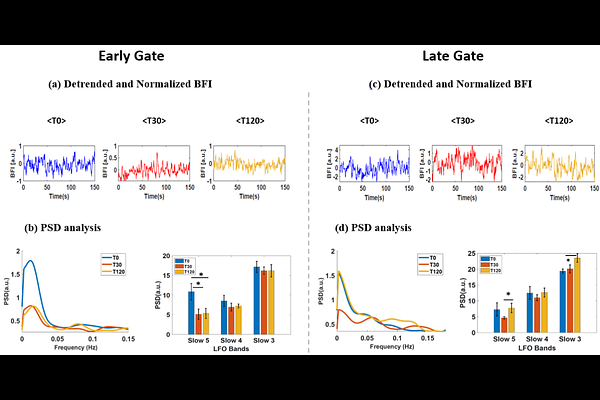Depth-Sensitive Assessment of Cerebral Blood Flow and Low-Frequency Oscillations After Traumatic Brain Injury in Mice Using Time-Gated Diffuse Correlation Spectroscopy

Depth-Sensitive Assessment of Cerebral Blood Flow and Low-Frequency Oscillations After Traumatic Brain Injury in Mice Using Time-Gated Diffuse Correlation Spectroscopy
Sabaghian, S.; Poon, C.-S.; Langri, D. S.; Rambo, T. M.; Miller, A. J.; Foreman, B.; Sunar, U.
AbstractTraumatic brain injury (TBI) can lead to long-lasting impairments in cerebral perfusion, making early detection of microvascular changes critical for guiding clinical interventions. In this study, we employed time-gated diffuse correlation spectroscopy (TG-DCS) at 1064 nm to non-invasively quantify depth-resolved cerebral blood flow (CBF) and low-frequency oscillations (LFOs) in a mouse model of closed-head injury. By analyzing early (superficial) and late (deeper) photon arrival times, we identified a significant drop in CBF shortly after injury, with a partial recovery observed at 2 hours post-trauma. Power spectral analysis of the blood flow index revealed significant alterations in LFO bands, particularly in slow-5 (0.01-0.027 Hz) and slow-3 (0.073-0.198 Hz) ranges, with p < 0.05 at both early and late gates. These changes were more pronounced than BFI alterations alone, indicating that LFOs may serve as sensitive biomarkers of neurovascular disruption. Our findings demonstrate the feasibility of TG-DCS for depth-specific monitoring of cerebral hemodynamics and oscillatory dynamics after TBI and suggest its potential utility in translational neurotrauma research.